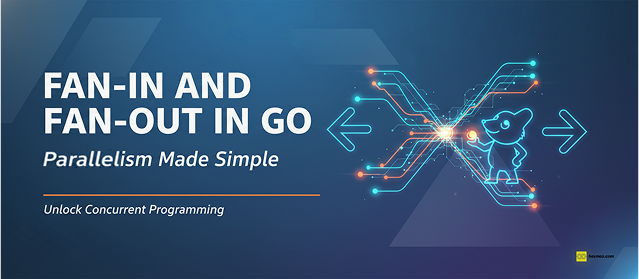Build Your CAN Bus Skills: A Beginner’s Guide to Using CAN in Your Projects

In this article, we’ll dive into the CAN (Controller Area Network) Bus protocol by building a hands-on setup using the MCP2515 CAN Bus Module and an Arduino board. CAN is a high-reliability, long-range communication standard designed for microcontrollers and embedded systems—without the need for a central host. It is widely adopted in automotive, industrial, and robotic applications.
Today’s vehicles rely heavily on real-time data exchange between dozens—or even over a hundred—ECUs (Electronic Control Units). These include systems like autonomous driving, airbag deployment, ABS, cruise control, and battery management systems. Conventional protocols such as UART, SPI, and I²C fall short in such high-speed, fault-tolerant, multi-node environments. This is where CAN shines, with its collision-resistant message prioritization and robust noise immunity.
To get hands-on with CAN communication, we’ll set up a simple two-node CAN network using the MCP2515, a standalone CAN controller IC, and its companion transceiver TJA1050.
Connected via SPI to Arduino boards, these modules will allow us to send and receive messages that emulate real-world automotive or industrial communication patterns. CAN supports transmission speeds from 50 kbps to 1 Mbps, with distance ranges between 40 meters and 1000 meters, depending on the baud rate and cable quality.
By the end of this guide, you'll be equipped to implement a basic CAN network, understand how to transmit and receive data frames, and appreciate why the CAN protocol remains the gold standard for robust embedded communication.
For foundational theory, check out our in-depth article: Understanding CAN Bus
Understanding the MCP2515 CAN Controller
The MCP2515 module implements CAN 2.0B, supports up to 1 Mbps, and integrates both the MCP2515 stand-alone CAN controller IC and the TJA1050 high-speed transceiver IC.

Key features of the MCP2515 controller:
-
Stand-alone CAN 2.0B controller with SPI interface (10 MHz)
-
Three transmit buffers with prioritization and abort-on-collision
-
Two receive buffers with mask/filter functionality (six 29-bit filters, two 29-bit masks)
-
Interrupt output to signal message reception
-
Operates at 4.75–5.25 V with an 8 MHz crystal

The MCP2515 has an interrupt (INT) output pin that can trigger an MCU interrupt when a valid message is received and loaded into one of the receive buffers.
Role of the TJA1050 Transceiver
The TJA1050 serves as an interface between the MCP2515 CAN controller and the physical two-wire CAN bus, meeting automotive requirements for high-speed operation (up to 1 Mbps), low quiescent current, electromagnetic compatibility, and electrostatic discharge protection.

The TJA1050 CAN transceiver allows for a maximum of 110 nodes to be connected to the bus.
Technical Specifications
| Parameter | Specification |
|---|---|
| Operating Voltage | 4.75–5.25 V |
| CAN Specification | 2.0B at 1 Mbps |
| Crystal Frequency | 8 MHz |
| Transmit Buffers | 3 |
| Receive Buffers | 2 |
| Message Filters | 6 (29-bit) |
| Masks | 2 (29-bit) |
| Interrupt Outputs | 1 |
| Interface | SPI (up to 10 MHz) |
| Maximum Nodes | 110 |
For detailed information, refer to the MCP2515 datasheet and the TJA1050 datasheet.
Pin Configuration and Connections
The MCP2515 module provides two connectors:

Microcontroller Interface (SPI):
| Module Pin | Description | Arduino UNO Pin |
|---|---|---|
| VCC | 5 V Power | 5 V |
| GND | Ground | GND |
| CS | Chip Select (SPI) | D10 |
| SI (MOSI) | Master Out, Slave In (Serial Data) | D11 |
| SO (MISO) | Master In, Slave Out | D12 |
| SCK | SPI Clock | D13 |
| INT | Interrupt Output | D2 |
CAN Bus Connector:
| Connector | Description |
|---|---|
| H | CAN High (CAN_H) |
| L | CAN Low (CAN_L) |
When building a two-node network, connect CAN_H to CAN_H and CAN_L to CAN_L between both modules. For short breadboard experiments, twisted-pair cables are optional, but they become essential for longer runs and noisy environments. Ensure a common ground between Arduinos and place 120 Ω termination resistors at both ends of the bus for optimal signal integrity.
Building the CAN Network
Create a simple two-node CAN network by wiring two MCP2515 modules to two Arduino boards as shown above. Place the jumper on each module to enable the transceiver.
Programming the CAN Interface
Install the arduino-mcp2515 library by searching for "mcp2515" in the Arduino IDE Library Manager.
Library Installation
There’s a great library available for working with the MCP2515 module. You will need to download and install it in your Arduino IDE.
-
Open the Arduino IDE.
-
Navigate to Sketch > Include Library > Manage Libraries…
-
Wait for the Library Manager to download the library index and update the list of installed libraries.
-
Search for "mcp2515".
-
Install the arduino-mcp2515 library by autowp.
If above method not worked follow this:
-
Download the ZIP file from https://github.com/autowp/arduino-mcp2515/archive/master.zip
-
From the Arduino IDE: Sketch -> Include Library... -> Add .ZIP Library...
-
Restart the Arduino IDE to see the new "mcp2515" library with examples
I have used this library: https://github.com/autowp/arduino-mcp2515
Sender Sketch
#include <SPI.h>
#include <mcp2515.h>
MCP2515 mcp2515(10);
struct can_frame txFrame1, txFrame2;
void setup() {
Serial.begin(115200);
while (!Serial);
mcp2515.reset();
mcp2515.setBitrate(CAN_125KBPS);
mcp2515.setNormalMode();
Serial.println("CAN Sender Initialized");
}
void loop() {
// Frame 1: "Hello "
txFrame1.can_id = 0x100;
txFrame1.can_dlc = 8;
memcpy(txFrame1.data, "Hello \0" , 8);
// Frame 2: "World"
txFrame2.can_id = 0x101;
txFrame2.can_dlc = 8;
memcpy(txFrame2.data, "World\0\0\0", 8);
mcp2515.sendMessage(&txFrame1);
mcp2515.sendMessage(&txFrame2);
Serial.println("Sent: Hello World");
delay(3000);
}
Receiver Sketch
#include <SPI.h>
#include <mcp2515.h>
MCP2515 mcp2515(10);
struct can_frame rxFrame;
void setup() {
Serial.begin(115200);
while (!Serial);
mcp2515.reset();
mcp2515.setBitrate(CAN_125KBPS);
mcp2515.setNormalMode();
Serial.println("CAN Receiver Initialized");
Serial.println("ID DLC DATA");
}
void loop() {
if (mcp2515.readMessage(&rxFrame) == MCP2515::ERROR_OK) {
Serial.print(rxFrame.can_id, HEX);
Serial.print(" ");
Serial.print(rxFrame.can_dlc);
Serial.print(" ");
for (uint8_t i = 0; i < rxFrame.can_dlc; i++) {
if (rxFrame.data[i] != 0)
Serial.print((char)rxFrame.data[i]);
}
Serial.println();
}
}
Final Output

Performance Insights and Troubleshooting
During initial testing, low-cost CAN modules exhibited intermittent failures: the CAN_L line remained inactive despite correct oscillator configuration and wiring. After extensive forum-based debugging and attempted workarounds, the issue persisted. Replacing the modules with higher-quality boards resolved the signal-generation problem. In summary:
-
The arduino-mcp2515 library and code are reliable
-
Avoid substandard CAN modules; invest in reputable hardware
-
Ensure proper bus termination and wiring
Real-World Use Cases
CAN Bus is widely used in automotive ECUs, battery management systems, industrial automation, robotics, and distributed home automation systems.
I will be writing article in the future—stay tuned!
Conclusions
The MCP2515 module simplifies CAN communication with Arduino, enabling robust, high-speed data exchange using just a few wires and lines of code. This foundation can be extended to complex multi-node networks in automotive and industrial applications.
Useful Links
LiveAPI: Interactive API Docs that Convert
Static API docs often lose the customer's attention before they try your APIs. With LiveAPI, developers can instantly try your APIs right from the browser, capturing their attention within the first 30 seconds.









